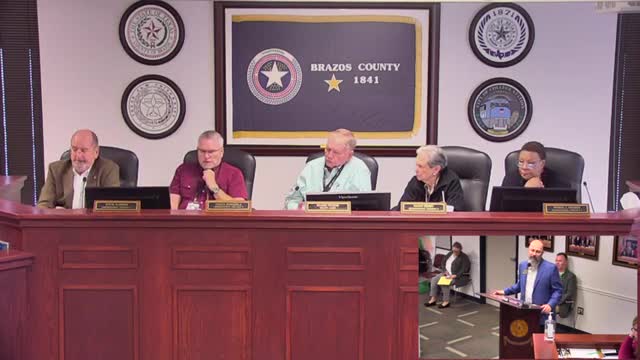Counties challenge city regulations in heated jurisdiction debate
September 05, 2024 | Brazos County, Texas
This article was created by AI summarizing key points discussed. AI makes mistakes, so for full details and context, please refer to the video of the full meeting. Please report any errors so we can fix them. Report an error »

In a recent government meeting, officials discussed the complexities surrounding the authority of cities and counties in regulating development, particularly in areas outside city limits. The conversation highlighted historical shifts in power dynamics, noting that a legislative change in 2007 allowed cities to impose regulations in extraterritorial jurisdictions (ETJs) that counties previously managed.
One official expressed concern that cities have been imposing regulations beyond their limits, which the county lacks the authority to challenge. This has led to confusion and frustration among developers who question why they must adhere to city standards when operating outside city boundaries. The discussion emphasized the need for clarity regarding subdivision regulations and the potential for adopting either city or county standards.
The officials acknowledged the diversity of approaches across Texas's 254 counties, suggesting that there is no one-size-fits-all solution. They pointed out the importance of interlocal agreements in determining the best path forward for development in ETJs, especially as cities and counties navigate their respective responsibilities.
A significant point of contention remains the future of ETJs, with uncertainty about whether their boundaries will shrink or change in upcoming legislative sessions. This unpredictability complicates planning and regulatory efforts, leaving counties to grapple with the implications of city regulations in areas they believe will remain under county maintenance.
The meeting underscored the necessity for ongoing dialogue between city and county officials to establish a coherent framework that balances development needs with regulatory authority, particularly in light of proposed legislation like Senate Bill 2038, which questions the rationale behind city authority in areas unlikely to be annexed.
One official expressed concern that cities have been imposing regulations beyond their limits, which the county lacks the authority to challenge. This has led to confusion and frustration among developers who question why they must adhere to city standards when operating outside city boundaries. The discussion emphasized the need for clarity regarding subdivision regulations and the potential for adopting either city or county standards.
The officials acknowledged the diversity of approaches across Texas's 254 counties, suggesting that there is no one-size-fits-all solution. They pointed out the importance of interlocal agreements in determining the best path forward for development in ETJs, especially as cities and counties navigate their respective responsibilities.
A significant point of contention remains the future of ETJs, with uncertainty about whether their boundaries will shrink or change in upcoming legislative sessions. This unpredictability complicates planning and regulatory efforts, leaving counties to grapple with the implications of city regulations in areas they believe will remain under county maintenance.
The meeting underscored the necessity for ongoing dialogue between city and county officials to establish a coherent framework that balances development needs with regulatory authority, particularly in light of proposed legislation like Senate Bill 2038, which questions the rationale behind city authority in areas unlikely to be annexed.
View full meeting
This article is based on a recent meeting—watch the full video and explore the complete transcript for deeper insights into the discussion.
View full meeting
